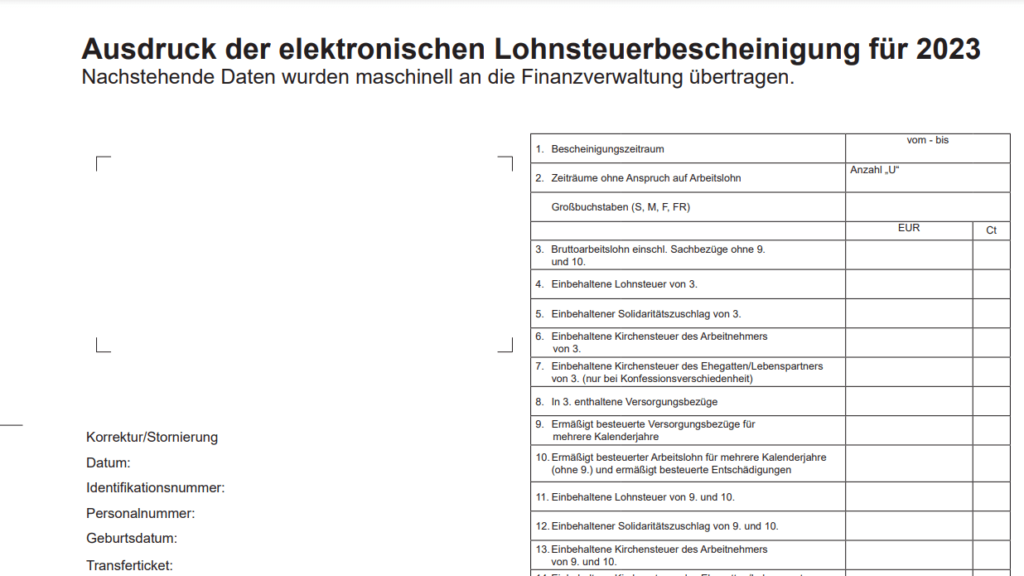In Germany, the taxation system for married couples differs from the joint tax return systems found in some other countries. While there isn’t a traditional joint tax return, married couples have the option of being assessed together through a process called “Joint tax return (Zusammenveranlagung).” This article provides an in-depth exploration of the German tax system for married couples, including eligibility, benefits, available tax return types, and considerations for civil unions and same-sex marriages.
1. Individual Taxation vs. Joint tax return
Germany operates on an individual taxation system, meaning each spouse typically files a separate tax return. However, married couples can choose Zusammenveranlagung, where their combined income is used to calculate the overall tax liability. This option allows couples to potentially benefit from certain tax advantages.
2. Eligibility for Joint tax return
Eligibility for Zusammenveranlagung (joint tax return), the option for married couples to be assessed together for income tax purposes in Germany, is generally straightforward. Here’s a more detailed exploration of the eligibility criteria:
2.1 Marital Status
- Married Couples: The primary eligibility criterion is being legally married. Couples who have entered into a valid marriage, regardless of whether it’s a civil or religious ceremony, are eligible for Zusammenveranlagung.
- Civil Unions and Same-Sex Marriages: In Germany, civil unions and same-sex marriages receive equal treatment to opposite-sex marriages. Therefore, couples in civil unions or same-sex marriages are also eligible for Zusammenveranlagung.
2.2 Duration of Marriage
- Couples can choose to file a joint tax return for any period during which they are legally married in the tax year. There is no requirement for the entire tax year to be covered by the marriage.
- For example, if a couple gets married in June or even on the 31st of December, they can still opt for joint tax return for the entire tax year, even though they were only married for part of it.
2.3 Mutual Agreement
- Both spouses must agree to be assessed together. This mutual agreement is a fundamental aspect of Zusammenveranlagung.
- If one spouse prefers to file an individual tax return while the other opts for Zusammenveranlagung, the tax authorities will typically process the returns accordingly.
2.4 Residency Status
- Generally, tax residency is determined individually for each spouse. However, for the purpose of Zusammenveranlagung, both spouses should be tax residents in Germany.
- If one spouse is a non-resident for tax purposes, it might affect the eligibility for joint assessment. Special considerations apply, and professional advice is recommended in such cases.
2.5 Children and Dependents
- The presence of children or dependents can influence the decision to opt for Zusammenveranlagung.
- Combining incomes may impact various family-related tax benefits and credits. Couples with children should consider the implications of joint assessment on child-related allowances and deductions.
3. Benefits of Joint tax return (Zusammenveranlagung)
Opting for Zusammenveranlagung, or combined tax assessment, in Germany can offer several benefits for married couples. While the decision to choose Zusammenveranlagung depends on individual circumstances, the potential advantages include:
3.1 Progressive Taxation
- Germany employs a progressive tax rate system, where higher incomes are taxed at higher rates. Combining incomes through Zusammenveranlagung may result in a more favorable overall tax rate for the couple.
- The progressive tax brackets for married couples are different from those for single individuals, potentially reducing the tax burden on the combined income.
| Income range for single | income range for couples | tax rate |
|---|---|---|
| less than 10,908€ | less than 21,816€ | 0% |
| 10,909€ – 62,809€ | 21,817€ – 125,618€ | 14%-42% |
| 62,810€ – 277,825€ | 123,619€ – 555,650€ | 42% |
| more than 277,825€ | more than 555,650€ | 45% |
3.2 Utilization of Tax Deductions and Credits
- Certain tax deductions and credits are based on the combined income of the couple. By opting for Zusammenveranlagung, couples may maximize their eligibility for these benefits.
- For example, deductions related to education expenses, healthcare costs, or home ownership may be more beneficial when considering the combined financial situation of the couple.
3.3 Family-Related Allowances
- Zusammenveranlagung can impact family-related allowances and benefits. This is particularly relevant for couples with children.
- Child-related allowances, parental benefits, and other family-oriented tax advantages may be more advantageous when assessed jointly.
3.4 Spousal Income Splitting
- For couples with one spouse earning significantly more than the other, Zusammenveranlagung can help balance the overall tax burden.
- The lower-earning spouse’s income is effectively taxed at the higher-earning spouse’s rate, potentially resulting in overall tax savings.
3.5 Handling of Losses
- In cases where one spouse has financial losses (such as from self-employment or investments), these losses can be offset against the other spouse’s income when filing jointly.
- This can reduce the overall taxable income and, consequently, the tax liability for the couple.
3.6 Simplified Administration
- Filing a joint tax return simplifies the administrative process. Instead of each spouse submitting an individual return, the couple submits a single, combined return.
- This can streamline the tax filing process and potentially reduce administrative complexities.
4. Types of Tax Returns for Married Couples
In Germany, as mentioned previously, married couples have two primary types of tax returns to choose from: individual tax assessment (“Einzelveranlagung”) and combined tax assessment (“Zusammenveranlagung”). Each option has its characteristics and implications for tax liability. Here’s an elaboration on these types of tax returns
4.1 Einzelveranlagung (Individual Tax Assessment)
- Description: In the default option, each spouse submits an individual tax return, reporting their own income, deductions, and credits separately.
- Calculation: The tax authorities assess each spouse’s income individually, applying the respective tax rates and considering individual deductions and credits.
- Benefits:
- Each spouse’s financial situation is assessed independently.
- Useful when there are significant differences in income or if one spouse has specific deductions or credits that don’t benefit the other.
- Considerations:
- May not optimize the utilization of certain joint deductions and credits.
- The tax liability is calculated based on each spouse’s individual circumstances.
4.2 Zusammenveranlagung (Joint Tax Assessment)
- Description: Married couples can choose to be assessed together, combining their incomes for tax purposes. This option is known as Zusammenveranlagung.
- Calculation: The tax authorities calculate the overall tax liability based on the combined income of the couple. The progressive tax rate structure mentioned in the above table is applied to the total income.
- Benefits:
- Potential for a more favorable tax rate due to progressive taxation.
- Income splitting may result in reduced tax liability for the couple.
- Joint access to certain deductions and credits based on combined income.
- Considerations:
- Both spouses must agree to be assessed together.
- Impact on family-related allowances and benefits may vary.
4.3 Optional Switch Between Types
- Couples have the flexibility to choose the most advantageous option for each tax year. For example, if there is a change in income, deductions, or other financial circumstances, the couple can decide whether to opt for Einzelveranlagung or Zusammenveranlagung for that specific year.
- It’s important to note that the decision made for a particular tax year applies to the entire year, and couples cannot switch between the two assessment types for the same tax year.
Conclusion
Understanding the intricacies of the German tax system for married couples is essential for making informed decisions about tax assessments. While there isn’t a traditional joint tax return, the option of Zusammenveranlagung provides a means for couples to optimize their tax liabilities. Whether choosing individual or combined assessment, consulting with a tax professional ensures that couples navigate the complexities of the tax code and make decisions aligned with their financial goals.


